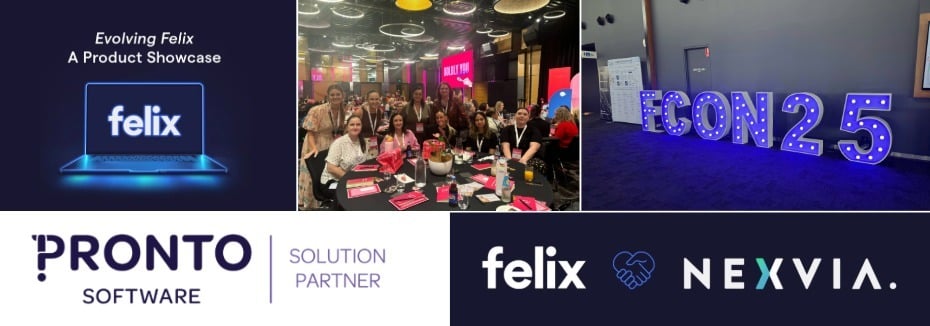Previously, we’ve talked about the definition of vendor management, explored the different nuances and challenges due to Covid-19.
In this article, let’s dive into the practical side. If you’re in the early research phase, this will help you formulate your requirement checklist and build out business use cases for other stakeholders in your organisation.
Essential components of VMS
Without the bells and whistles, here are the core features to look out for in a vendor management solution.
Compliance management
This is a prerequisite for a VMS in high-risk supply chains such as construction, mining, and utilities.
However, it’s important to note that it’s not just a repository of static compliance documents captured at a point in time, never to be seen again. It’s a continuous, collaborative and fluid process. Depending on your organisation’s risk appetite, a few things might vary regarding how you want to use VMS to manage compliance of your external workforce:
- Prequalification before a sourcing event
- Prequalification to join a panel or achieve preferred supplier status
- Requalification after a certain period or in response to an external requirement
- Health, safety, environmental or quality reviews following an engagement
Spending too much time building your vendor prequalification questionnaire? Lean on the industry’s standard with Felix Vendor Optiqual®. Learn more here.
Database segmentation
As the title suggests, the ability to meaningfully group your suppliers by category, location, unique attribute (Indigenous owned, social enterprise), project or risk profile will improve overall visibility of your supply chain and drive effective relationship management.
Clear supplier segmentation in a VMS allows you to easily identify, engage and communicate with the appropriate suppliers when necessary. We saw many cases during Covid-19 where organisations had little visibility over who their essential suppliers were due to data being kept offline in spreadsheets.
Moreover, increasing legislative requirements mean an increasing need to report on things like modern slavery, Indigenous participation, local content etc. within segments of your supply chain.
From a prequalification perspective, not all suppliers are the same – so there’s no reason for each one to follow the same (in some cases, onerous) process.
Leading VMS channel suppliers through tailored prequalification routes, often based on risk profile, location or category of supply.
Data Cleansing
“Data is the new oil” – as they all say – yet there’s no point in having unusable or outdated data. We’ve previously discussed the importance of data in digital procurement. By enabling your suppliers to enter data directly and integrating your VMS with surrounding systems – you'll maintain a much cleaner data set.
Governance
“For governance to be effective, the three components – people, processes, and systems – should work in harmony.”
That means a VMS should be able to facilitate, if not expedite, the approval and evaluation processes (e.g. for a new vendor or tender award) via automated workflows - all while creating an audit trail of each vendors’ interactions with your organisation.
In the interest of collaboration and transparency, feedback should also be made available to procurement management and operational teams so that it can guide future decision making.
Self-service portal for vendors
Why is this important? Vendors play a critical role in helping organisations deliver outcomes on time, within budget, and to a certain quality and safety standard. Therefore, collaboration and communication with your vendors is critical to your success. A good VMS allows access to vendors to onboard themselves, maintain their information and be able to respond to any correspondence you send them.
Secondly, having this setup can mitigate risks. Since the system ensures organisations cannot engage vendors who have expired compliance documents, the onus is on suppliers to maintain their compliance status in order to win work.
Pitfalls of using other tools for vendor management
Here are some of the most common questions around alternative tools:
"Can we just use spreadsheets?”
The problem with using a resource-intensive tool like spreadsheets to manage hundreds, if not, thousands of vendors - is that by the time someone needs to make a decision based on some data, it’d likely be already outdated. Spreadsheets are also one-way-traffic for data maintenance, with the responsibility to update vendor information falling directly on your staff.
Tempted to use existing tools? Instead of cost savings, you might end up with more headache and inefficiency down the track.

“How is it different from using a CRM?”
You (and your larger vendors) more than likely have a Customer Relationship Management (CRM) tool in place to manage, nurture customers in the hope of cross-selling or up-selling them. The flipside of that would be a VMS. Ultimately, CRM and VMS touch two different sides of the supply chain with different business processes, but both aim to facilitate satisfying, ongoing relationships with external organisations.
“Isn’t my ERP sufficient?”
While ERP should be a centralised place that hosts important information about vendors and related invoicing/vendor payments, they are generally not purpose-built to be used by non-procurement, operational teams to manage and engage suppliers.
This leads to several processes being managed offline or in spreadsheets, which makes it difficult for a central procurement team to maintain visibility and control. With that said, a strong VMS solution should integrate with an ERP solution seamlessly to ensure data accuracy across the whole business.
Picking the right VMS: Other criteria
In the above section, we’ve looked at an “ideal” vendor management system in terms of features. Now let’s zoom out a bit to analyse the non-technical or more intangible/philosophical criteria.
Fit for purpose:
|
Criteria |
Commentary |
|
Consider your end user requirements and the key vendor management processes you need to digitise |
Going with a full end-to-end procurement solution might be convenient in terms of the servicing and integration (although that’s debatable), there can be gaps that specialist VMS solutions address better - which can serve the core purpose of increasing efficiency and mitigating risks – rather than having to implement workarounds in a larger, more rigid system. Understanding your end user requirements will provide clarity on what a VMS needs to deliver from a functionality standpoint. This will eliminate data being managed in spreadsheets and emails and will drive greater adoption from your staff. |
|
Suit your industry - adopt best practice processes |
Industries that heavily rely on subcontractors like construction, mining, utilities have unique vendor management challenges. Software offerings built with that in mind can provide a more meaningful outcome than generic ones. |
|
Suit your timeline and digital transformation efforts |
Whether it’s a full-scale replacement of your existing procurement suite or an agile enhancement approach, having a big picture vision while evaluating software helps. |
Connectivity:
|
Criteria |
Commentary |
|
With surrounding processes such as sourcing and P2P |
Again, if at any point in time, data is needed for decision making, having the latest and accurate information around vendors and past interactions could be make-or-break. The ability to pass critical data from VMS to other systems is a must. |
|
With existing platforms such as project management or ERP |
Ease of deployment and usage:
|
Criteria |
Commentary |
|
Rapid implementation available |
Although a vendor management system is a crucial project, implementing it shouldn’t take months and months. Choosing cloud based or web based vendor management solutions (instead of on-prem) is a good first step. The quicker it is ready to be used, the easier it is for change management and uptake for the relevant parties that will be using the tool (e.g. procurement, HSEQ, project teams). |
|
Smooth vendor experience |
It can be a paradigm shift for vendors to enrol in your vendor management initiative with a self-service portal, so as a bare minimum, the chosen VMS should be able to save vendors time and provide a straightforward user experience. |
Support:
|
Criteria |
Commentary |
|
Dedicated support team with multiple support options |
This is often a neglected area but important in terms of productivity for those will be using the VMS day in day out. We all know how frustrating it is being put on hold for hours or feeling like no one is acknowledging our issues. |
Download the handy checklist of requirements that would help you evaluate vendor management & procurement software.

Recent Articles
2025 in review: Milestones, insights and achievements
2025 – a year of that brought meaningful developments for Felix as we continue to address the evolving needs of organisations navigating complex supply-chain environments.
Top 10 reasons for a centralised vendor database
As organisations grow, so does the complexity of managing vendor relationships. Many still rely on spreadsheets or siloed systems, which can lead to inefficiencies, data inconsistencies, and compliance risks. A centralised vendor database offers a smarter, more scalable solution that brings structure, visibility, and control to procurement operations.
Here are the top 10 reasons why centralising your vendor data is a strategic move.
Five ways poor contract storage could be costing your organisation money
Contracts are the backbone of every business relationship – legally binding documents that define expectations, responsibilities, and value.
But what if the way your organisation stores those contracts is quietly costing you money?
Let's stay in touch
Get the monthly dose of supply chain, procurement and technology insights with the Felix newsletter.







